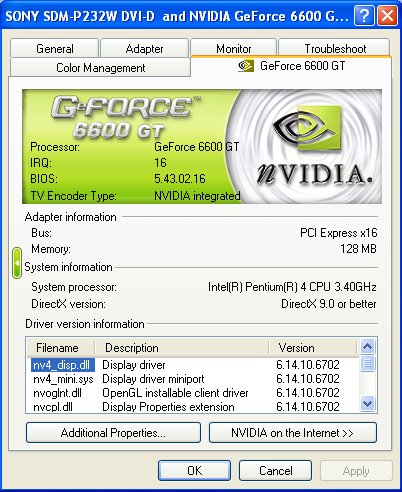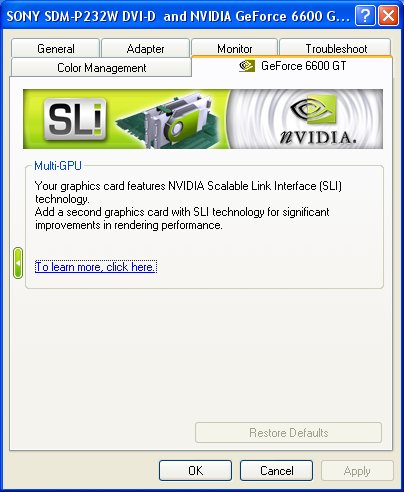 |
|
|
|
In the Forums... |

Posted: December 14th, 2004
Given that the Nvidia NV43 or Geforce 6600(GT) chipset reviewed here is a native PCI Express solution it should be as no surprise to anyone about the lack of an Nvidia BR2 bridge chip. The latter will only feature in the AGP variant of these cards housing such chipset. As a brief reminder the NV40 or Geforce 6800 series GPU's are not native PCI Express solutions thus have to rely on the aforementioned bridge chip. It is safe to say that from now Nvidia wil build all its future chipsets to feature this technological form of communication with the system, should an AGP version be necessary by for example industry demand a bridge design is bound to appear once more. What all this means is the push towards a PCI Express only future, one which will benefit users more in the years to come, and to kick start that the NV43 (Geforce 6600(GT)) is the initial GPU from Nvidia to manifest this direction of evolution.

Many out to purchase a new graphics card take multiple criteria into consideration but the primary method of identifying the level of performance is via classification of product. It is nothing recent that Nvidia (and virtually all the industry) divide their goods into market segments. As it happens Nvidia's Geforce 6600 GPU in both standard and GT form is a mainstream solution, what this implies is that its intended audience is those who crave performance but are not willing to pay an arm and a leg for it. From a technology viewpoint the customer is offered a slower but still very capable version of a high end device. To put this into perspective of how much slower is slower our Galaxy Geforce 6600GT sample is a mainstream product but of the highest grade, in other words the next step up are cards housing the almighty Nvidia 6800 series GPU's. Below is a rundown of how Nvidia delivers their latest wave of graphics by means of arranging the potential of their latest designs.

As the above chart shows the 146 million transistor 6600GT is a 6800Ultra/GT albeit with 50% of their processing power taken away through limiting the number of pipelines to 8, pixel/vertex shaders to 8/3 units and employing a 128bit wide memory bus (as oppose to 256bit). This leaves the user with still a powerful card that will be available in 128MB (as the card reviewed here) and 256MB memory versions. What is perhaps most important this time round is how Nvidia has divided its lineup into varying market segments, the 6600GT for example is still a fully compliant DirectX9C and OpenGL 1.5 component and carries at its grasp an entire implementation of Shader Model 3.0. While memory frequency is always static at 1GHz yielding a maximum of 16GB/sec bandwidth core frequency is dynamic depending on 2D or 3D mode. Normal operation within Windows uses an economy mode to save power and reduce heat by working at 300MHz core, within 3D applications such as games the GPU works as its intended 500MHz rating. On the note of heat it should be mentioned that NV43 GPU's are manufactured at the 0.11 micron level, as a reminder NV40 (Nvidia 68000) GPU's are produced at 0.13 microns meaning this and other Nvidia 6600 GPU based graphics cards run cooler clock for clock than their more powerful 6800 members of the family. Those readers keenly observing the photos would of already noticed that Galaxy's 6600GT houses one very special feature - SLI (Scalable Link Interface). For those who aren't aware SLI is Nvidia's approach to linking two cards together on motherboards that support it to permit even faster system graphics throughput. In the case of our sample it means pairing it up with an exact other would yield results very close if not the same as one Nvidia 6800GT/Ultra. To accomplish such achievement one requires a SLI ready motherboard, a board that houses twin PCI Express x16 slots (although some exceptions do exist but somewhat lower performance). The original concept of SLI is not new and many keen gaming enthusiasts will remember how it made an impressive entrance back in 1998, then by a company now sadly absent from the industry - 3dfx Interactive. Although SLI is currently solely provided in selective Nvidia graphics cards arch rival ATI Technologies has already spoken of it developing its own version of this technology, something they hope to reveal sometime in 2005.


|
||
|
| |||
|---|---|---|---|
